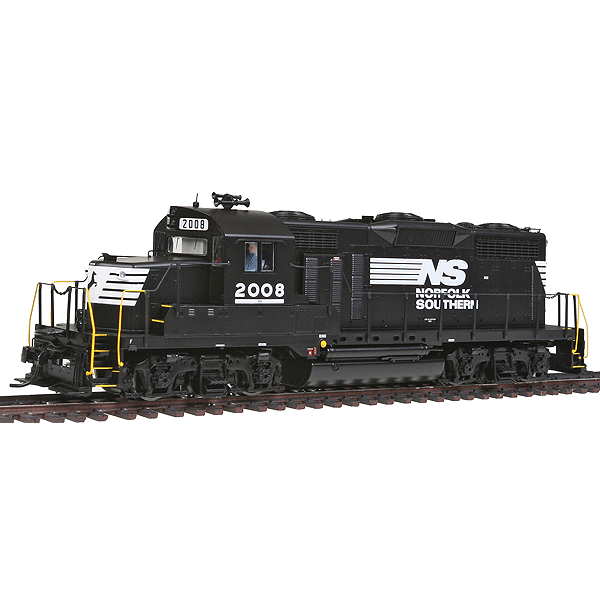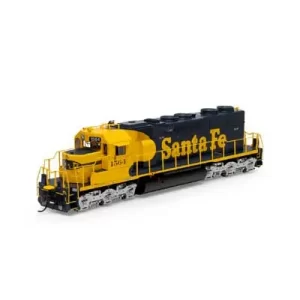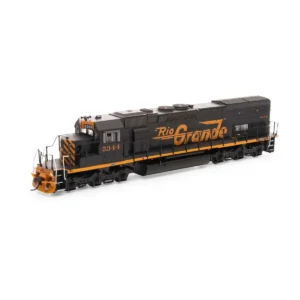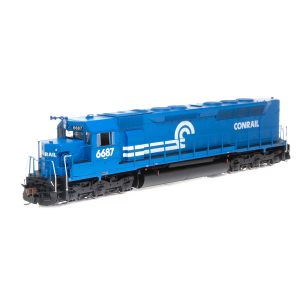Description
Railroad Short Name: NS
By the mid 50s, increasing pressure from long-haul trucks, declining passenger revenues and mounting costs forced western railroads to find new ways to improve service. Faced with expensive overhauls of early cab and hood unit diesels, many began looking at new equipment as well as ways to improve existing motive power. In 1955 Union Pacific equipped several GP9s with turbochargers as an experiment. Their success inspired EMD to create its own turbocharger for the 567 prime mover, leading to the introduction of the six-axle SD24 in 1958. Further experiments in 1959 created a four-axle version, dubbed the GP20. Early in their careers, the new units were typically assigned priority freights that demanded higher speeds. With the arrival of newer power, they were gradually bumped into secondary runs, and eventually spent their last years in local and yard service. Following their retirement, a few went to work for shortline operators. Western Pacific #2001, the very first GP20, was donated by UP to the Feather River Rail Society in 1985, where it has been restored to its as-built appearance.
Detailed to match Phase 1a units in service from the mid 1980s to 1991 with:
- Dynamic Brakes
- Pan-Top 48″ Front & Rear Radiator Fans
- Cab-Mounted Headlights
- Whip Antenna
- Leslie S5T Horn
- Twin Exhaust Stack Manifold
- Left Cab-Side Filter
- Roller Bearing Truck Journals
Locomotive Features:
- Road-Specific Detailing
- Five-Pole Skew-Wound Armature Motor
- 14:1 Gear Ratio for Easy Multiple Unit Operation
- Machined Brass Flywheels
- All-Wheel Drive
- Precisely Meshed Helical Gears for Silent Running
- Constant & Directional Headlights
- Heavy Die Cast Chassis for Maximum Traction
- Proto MAX(TM) Metal Knuckle Couplers
- Soundtraxx(R) Tsunami(R) Sound for DCC & DC Layouts






Reviews
There are no reviews yet.